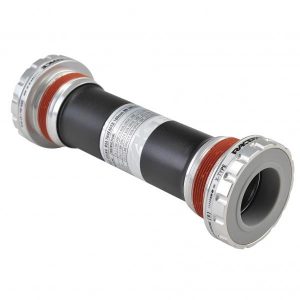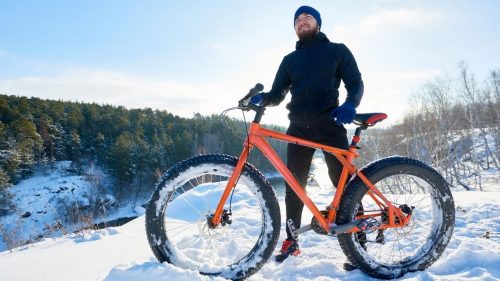Before purchasing any type of bicycle, geometry plays a huge role. Getting something that has the right type of build is going to lead to a better experience overall. One might think that the geometry of fat bikes stay relatively the same, but there are several options to consider these days.
Below, we take a look at some of the most important factors in fat bike geometry. Understanding what the primary use of the bike will be will go a long way towards picking the right one from the beginning.
A few subtle differences can end up being huge, even if shoppers might not know it initially. If possible, trying different builds out is the best way to go before committing to a bike that could cost thousands of dollars.
How To Choose a Fat Bike – Click for 8 Tips!
Different Fat Bike Riding Styles

Perhaps the best starting point is to simply think about what type of riding will be done on a particular fat bike. Some people are looking for an all-around single track type of build, used for technical trails in all kinds of weather.
Others want a more well-rounded adventure bike, capable of handling climbing, constant snow biking, bike packing, and double track. This is a solid middle-ground option for those who might not want to commit one way or another.
Finally, there will always be race options with any bike. Fat bikes built for racing can’t handle nearly as many terrains, but they certainly travel much faster on trails they are built for. This is usually not the first type of fat bike any person out there will be interested in.
The all-around single track type of build is the most upright position a person can find with a fat bike. As the height of the bike increases, suspension travel required goes up. A more standard type of option might be an adventure fat bike, as it allows for riding on the most varied surfaces out there. It works well on pavement, snow, sand, mud, and more.
A competitive racing fat bike will have the lowest riding position, allowing for aggressiveness on the trail. As the reach of this type of fat bike increases, it jumps up quite a bit with stack. Not everyone is going to need a racing bike, as it is usually a bit too uncomfortable for the casual rider. It can seem effortless to ride at times, but a bit cumbersome at other times.
Important Parts of Fat Bike Geometry

Now that some basic categories are covered, examining some of the most important parts of fat bike geometry is important. Look at these setups as much as possible before ultimately settling on the right fat bike.
Head Tube Angle
The general consensus is that a steeper head tube angle is going to result in better handling overall. Technical trails need quicker handling in order to move appropriately, but there are ways to get around that if needed. Going with a slightly shorter stem, a fork rake that is a bit shallow, or an increase in tire pressure can make handling easier.
Related to this part of the bike’s geometry is seat tube angles. People did not really pay too much attention to this up until a few years ago, when the dropper post started to change things. Seat tube length no longer was as relevant as before, and people became very interested in reach only.
A slack head tube angle is good, but slack seat tube angles are bad. That is because a very steep seat angle is putting a person in a center position when climbing. This makes it easier to shift weight when needed for a little bit more comfort overall.
Bottom Bracket Drop

Fat bikes have a wider bottom bracket shell than just about any mountain or road bikes out there. A wider stance on a bike means that there is the chance that a pedal is clipped when cornering, which might be a problem for some.
Anyone who is riding their fat bike on trails at high speed might look for some type of solution. Those who are mostly riding in more open spaces or on snow a lot will not have to worry too much about this being an issue.
Chainstay Length
Chainstay length is the horizontal measurement taken from the center of the rear wheel to the center of the bottom bracket. A lot of people do not necessarily like shorter lengths because the bike ends up looping out when climbing.
It does help a little bit with cornering, but not enough for fat bike riders to really fall in love with it. They do help make the bike easier when getting the front end up, but not all fat bike riders want that either.
Greater length usually adds a bit more stability to riding, especially when going downhill. It also keeps the front end from popping up when climbing, which some fat bike riders really find as a great added bonus.
It comes down to a lot of personal preference, but longer is usually the more preferred option with fat bikes if a person does not know which way to go.
Stack and Reach
It was touched on a bit above, but stack and reach is very important for any type of bike geometry. Stack is the vertical distance from the center of the bike’s bottom bracket, all the way to the midpoint of the head tube. Reach is used to measure horizontal distance, going from the center of the bottom bracket to the head tube’s middle.
There is always the option for a person to be measured to get a good starting point, but nothing replaces actually trying out bikes and how they feel in the store. Understanding how everything feels usually puts everything into perspective.
Wheelbase
Fat bike riders should be looking for shorter wheelbase is for the most part, unless they are really performing at a high-level. That is because the distance between the front and rear dropouts need to be long enough to feel somewhat comfortable, but short enough that it handles fairly well. A longer option adds more stability, so entry-level fat bikes can sometimes have this.
The Frame Size Myth
Simply looking at frame size for a fat bike is not going to give people the results they are looking for. It is very frustrating, but it just does not work the way it should. It is a very basic measurement, but there is no universal standard to go off of. What might be considered a small bike and a specific measurement such as 51 cm will not match up with a different manufacturer.
This is why understanding the importance of different geometry makes such a big difference. This is how people can find specifically what they need in order to perform well on a fat bike. It might not seem like that big of a deal for someone who is just learning the basics about fat bike riding right now, but each increase is going to be a bigger and bigger difference.
Riders definitely pay more attention to bike geometry when they are shopping for their second one. However, why not try to get it right that first time? With the proper knowledge beyond basic sizing, it becomes a lot easier.
Final Thoughts on Fat Bike Geometry
Do not be worried about getting fat bike geometry perfectly right out of the store. Chances are, a fat bike will need several tweaks to get it fitting just the way a person likes it.
The important thing is not to waste any time finding out a bit more about riding just by trial and error. Some people will know pretty quickly what to look for the next time they make an upgrade, or they will switch out parts as soon as possible.
It is one thing to try out different bike geometry setups, but make sure to ask for suggestions from people at the store as well. They work with bikes all the time, so they know exactly what to look for in order to give sound advice. If a person comes in wanting something in particular, they might be able to point people in the right direction without wasting too much time.

